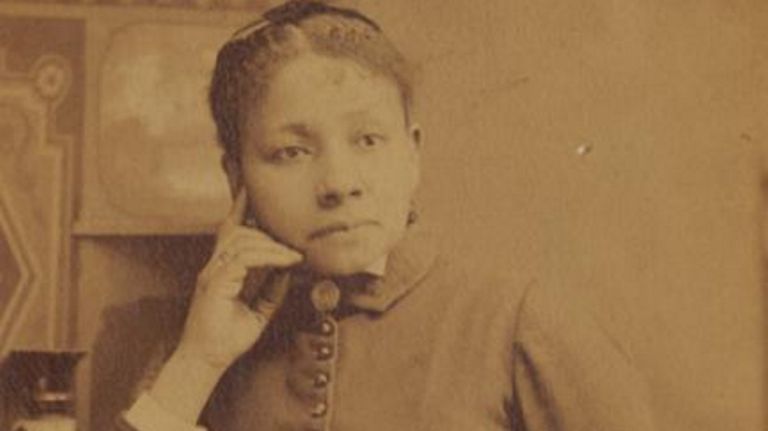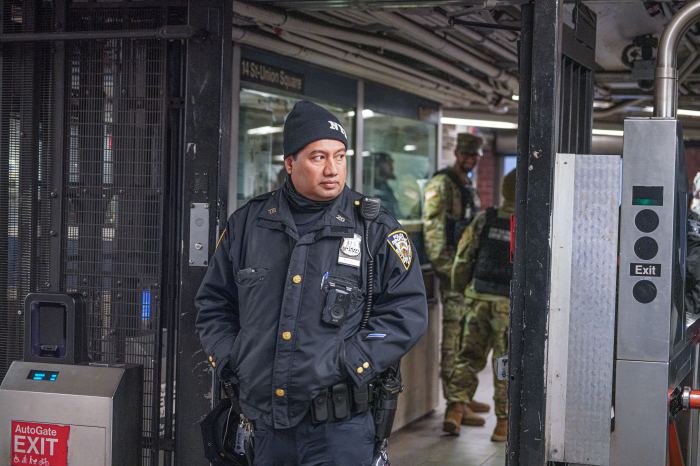 ” class=”wp-image-136982122″/>
” class=”wp-image-136982122″/>Photo Credit: Charles Eckert
Part of our Trailblazing Women series, which also includes the pioneers of Staten Island, Queens and the Bronx.
You know Supreme Court Justice Ruth Bader Ginsburg, Judge Judy and Barbra Streisand, but Brooklyn is home to others who paved the way for future generations in and out of the limelight.
Here is a look at women who helped shape the borough, according to Julie Golia, vice president for curatorial affairs and collections at the Brooklyn Historical Society.
“These were on-the-ground movers and shakers," Golia said.
Lady Deborah Moody (1586-1659)
Born in England and widowed by the death of Sir Henry Moody, Lady Deborah Moody developed revolutionary religious ideas. As an "anti-Baptist," Moody believed baptism could only occur when people were old enough and mature enough to declare their own religious beliefs.
“They persecuted her,” Golia said. “She moved first to Massachusetts, where there were puritans and other religious dissenters, but it turns out that she was even too radical for them, and then she was basically expelled from Massachusetts as well.”
Moody found her way to New York, then called New Netherland, where she purchased land in an area known today as Gravesend, Brooklyn.
"This is the first New World settlement that was founded by a woman,” Golia said. “She allowed complete religious freedom. You could be anything you wanted there."
Moody remained in Gravesend for the rest of her life and died just a few years shy of England conquering the area.

Emily Warren Roebling (1843-1903)
Emily Warren Roebling found herself building the Brooklyn Bridge by chance.
Her father-in-law, John Roebling, constructed many of the earliest suspension bridges in the eastern U.S. and was tapped to handle the Brooklyn Bridge. But he was injured on the job and died of tetanus. So his son, Washington Roebling, took over, before catching a bad case of the bends — excessive nitrogen bubbles in the blood brought on by rapid changes in pressure.
Emily Roebling quietly took the lead, protecting the privacy of her husband, whom she was caring for at home while also carrying out his directions at the site. Women working as engineers was seen as a preposterous, dangerous idea at that time, according to Golia.
“When the bridge went up, it was the longest suspension bridge in the world," Golia said. "At night she studied her butt off and essentially became a self-taught engineer. … It was because of her and her stewarding of this project that it was completed 13 years after they broke ground on it.”
Emily Roebling went on to earn a law degree and run charities.
“She was such an incredibly intelligent woman,” said Golia. “She was a force to be reckoned with.”
Susan McKinney Steward (1847-1918)
The daughter of prominent abolitionists, Susan McKinney Steward applied the same ambition and gumption her parents exhibited in a new field.
Steward graduated from medical school during an era where few women or black Americans were admitted and went on to be one of the most well-known, celebrated doctors in Brooklyn.
In the 1880s, she and colleagues launched Memorial Hospital for Women, a facility for women and children. Steward helped create and enforce hospital bylaws ensuring the doctors, surgeons and administrative board were run and staffed entirely by women.
“They asserted themselves both as being sort of uniquely able to care for women and children because they were women, but also they were doing surgery and complex medicine, which were fields that were largely barred to women,” said Golia. “They were claiming that their services, their skills, were equal to if not better than men at the time.”
Elsie Richardson (1922-2012)
She might be a native Harlemite, but Elsie Richardson fought for Brooklyn rights her entire life.
She and her husband moved to Crown Heights in the ‘40s, where she focused on getting more investment and support for communities that, then, were largely forgotten, such as Bedford-Stuyvesant, Golia said.
Richardson invited Sen. Robert Kennedy to tour Bed-Stuy in the 1960s as a way to evaluate President Lyndon Johnson’s so-called war on poverty. Their discussion led to Kennedy helping Richardson establish the first federally-funded community development corporation, the Bedford-Stuyvesant Restoration Corporation, which is still operating today.
“She was deeply political and incredibly savvy but she didn’t take any guff from anybody, including Robert Kennedy,” said Golia.
During the tour, Kennedy told Richardson the area is “interesting” and merited a study. Richardson responded, according to Golia, by saying, "No thank you. Bedford-Stuyvesant has been studied to death. What we really need is bricks and mortar."
Richardson was involved in the 1941 bus boycotts alongside Adam Clayton Powell, Jr. and, after earning a master’s degree in social research, spent years working at the Board of Education’s district office.
“She was really a pillar in her community for 60 years,” said Golia.
Shirley Chisholm (1924-2005)
Shirley Chisolm was the first black woman elected to Congress and the first woman to vie to be a major political party’s presidential candidate.
Born and raised in Brooklyn, Chisholm worked as an educator and became active with several political organizations, including the League of Women Voters, the National Association for the Advancement of Colored People and the local Democratic club.
She served first in the State Legislature, and then in the House of Representatives.
“It was very clear that Bedford-Stuyvesant in the 1968 election was going to have a black representative because of the way that the area was rezoned,” Golia said. “A lot of people thought it was going to be James Farmer, who was a civil rights activist. But she ran an incredibly on-the-ground, grassroots race and became the representative in 1968.”
In Washington, D.C., she introduced dozens of legislative pieces, including a comprehensive child care bill that got rampant support, but was vetoed by then-President Richard Nixon.
Although she did not win the Democratic presidential nomination in 1972, Chisholm entered 12 states’ primaries and won 10% of delegates’ votes at the party’s convention, according to the Smithsonian.
“Supposedly Kamala Harris drew a lot of her marketing and her own 2020 presidential logo from Chisholm’s campaign color scheme," Golia said. "That nod there is such a beautiful thing and shows the smart ways that Harris and other female candidates are looking to the pioneers of the past."



































